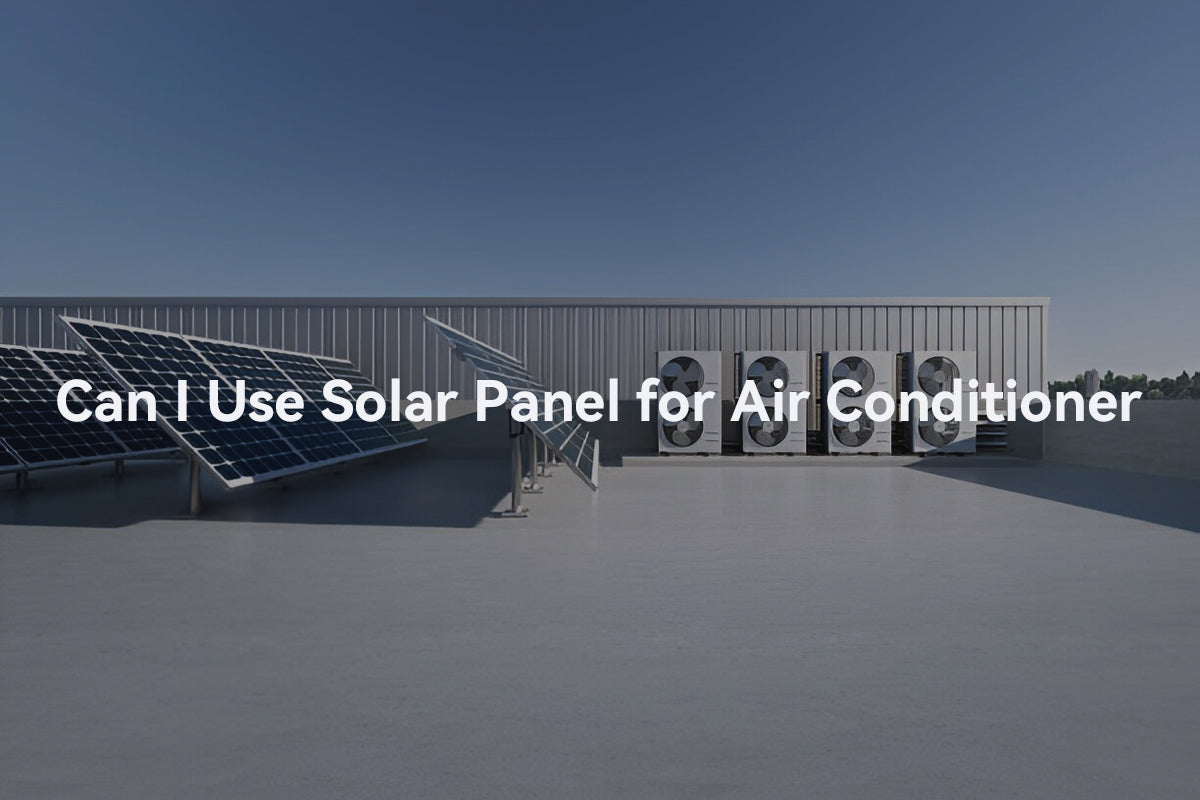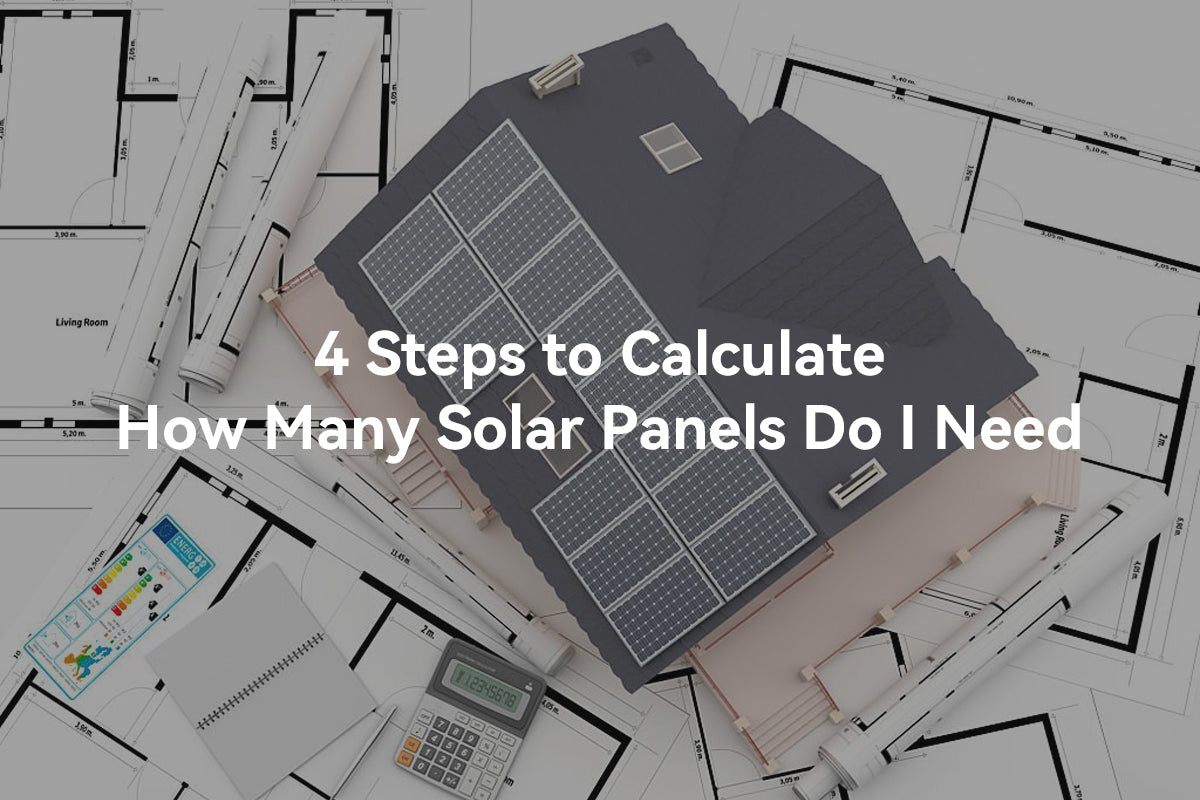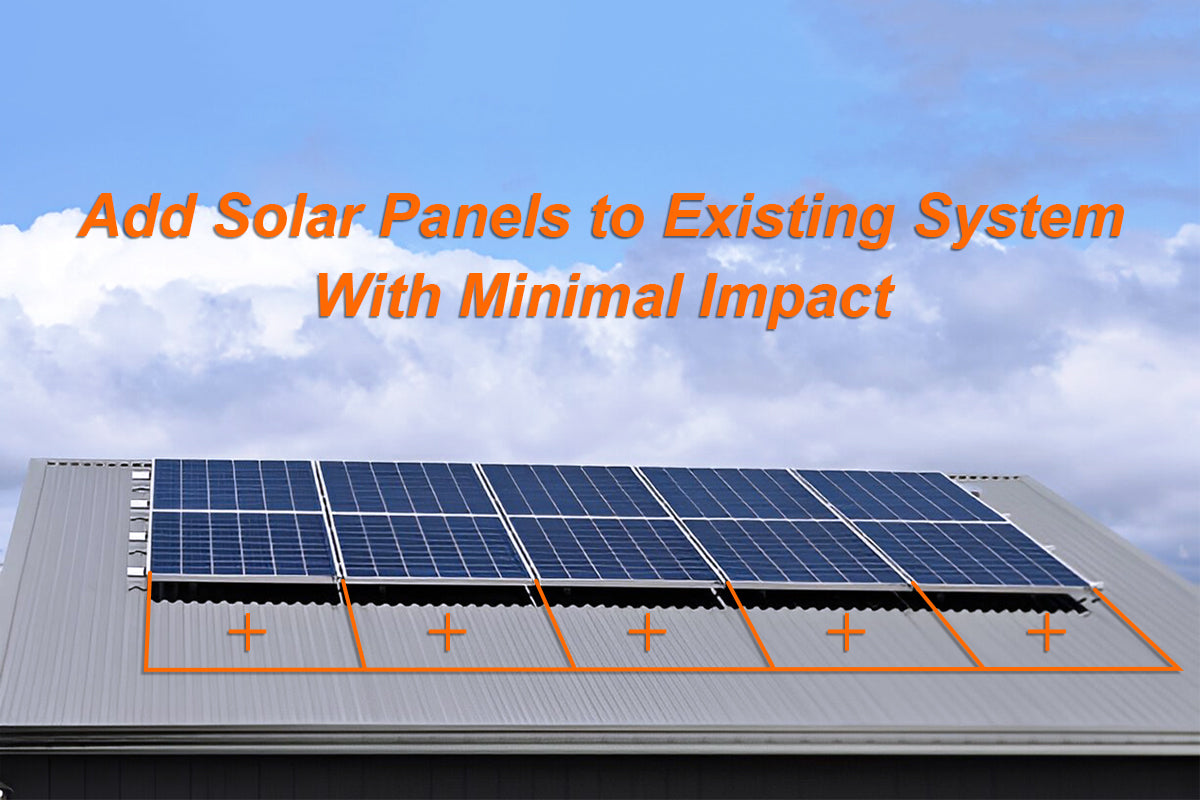According to statistics, approximately three-quarters of all homes in the United States have air conditioning. The EIA states that air conditioning consumes about 6% of all electricity in the US, while accounting for 17% of total household electricity expenditure nationwide, emitting approximately 117 million tons of carbon dioxide into the atmosphere annually.
Transitioning to solar power for air conditioning can reduce carbon footprint and significantly lower energy costs. In this article, we'll explore how to calculate the number of solar panels needed to power your air conditioner and ways to maximize savings on your electricity bill.
- Can I run an air conditioner on solar power
- Types of solar air conditioner
- How many solar panels do I need for an air conditioner
- Step1 - Calculate air conditioner power for solar design
- Step2 - Calculate the number of solar panels for the air conditioner
- How many batteries do I need for air conditioner
Can I run an air conditioner on solar power
Yes, you can definitely run an air conditioner using solar energy. It's a popular choice for those looking to reduce their carbon footprint and save on electricity bills.
The number of solar panels and size of your solar panel system needed will depend on factors such as the size of your air conditioner, your energy consumption patterns, and the amount of sunlight your location receives. And the components of the energy system may vary depending on the type of air conditioner.
Types of solar air conditioner
AC solar air conditioners for off grid system
In this setup, solar panels, a DC to AC inverter, and a solar battery are installed alongside your existing AC unit. Since the system is not connected to the grid, the battery stores power generated by the solar panels for use. This configuration is commonly used for RVs.
Note:
It is not recommended to connect the inverter directly to the solar panel because solar panels do not provide a stable voltage output, which could damage the air conditioner. To ensure a stable power supply, use a solar charge controller between the PV solar panel and the inverter.
Hybrid solar air conditioners
For homeowners, integrating a hybrid inverter charger into the solar power system is a more efficient option. With a hybrid inverter, the air conditioner can switch between being powered by solar panels on sunny days and the grid when solar production is low.
Additionally, the battery stores extra power from the solar panels for use at night or on cloudy days. You can also customize the priority of the power source (PV, Battery, Grid) or control the battery discharge period according to peak hours of Time-of-Use (TOU) rates.
DC solar air conditioners for on grid system
These air conditioners can be connected directly to the panels without the need for conversion. The panels and an inverter are installed alongside your existing AC unit. Since the panels are connected to the grid, a battery is not required for storage.
However, the air conditioner will stop working when there is no sunlight, such as at night, unless you install a battery or an AC to DC inverter.
How many solar panels do I need for an air conditioner
When considering how many solar panels you need to power your air conditioner, several factors come into play. The size of your air conditioner, your energy consumption habits, and the solar insolation in your area all influence the calculation.
Step1 - Calculate air conditioner power for solar design
In the following explanation, we assume you use solar energy solely to power the air conditioner. If you need to power additional household appliances, read our comprehensive guide on calculating the number of solar panels required.
To determine the number of solar panels needed to power your air conditioner, you first need to calculate the power consumption of your air conditioner. This can be done using two methods:
Method1 - Estimate based on the specifications of the air conditioner
To determine the power (in watts or kilowatts) of your air conditioner, check the specifications label. Air conditioners typically use between 500 and 4000 watts, depending on the model.
I want to emphasize that that since air conditioners are inductive loads, you need to check the surge power/starting power of the air conditioner, which is generally three times the rated power. When selecting an inverter, you should ensure that its operating power range is greater than the operating power of the air conditioner.
If you plan to use solar power exclusively for your air conditioner, a low frequency inverter with a power rating close to the air conditioner's rated power maybe is enough. This type of inverter can handle higher surge power, such as the PowMr low frequency inverter, which has a surge capacity three times its rated power.
Note:
Some air conditioners are rated in tons, indicating the cooling capacity needed to melt 2000 pounds of ice in one day. To convert BTU to kWh for easier calculations, multiply the BTU value by 0.000293.
Here, we provide an overview of the wattage ranges for both RV and home air conditioners.
Solar power for home air conditioner
| Home Air Conditioner | Wattage (Approx.) |
|---|---|
| Window Unit (5,000 BTU) | 500 - 700W |
| Central Air Conditioning (2.5 Ton) | 3,500 - 4,000W |
| Split System (12,000 BTU) | 1,000 - 1,500W |
| Portable Air Conditioner (10,000 BTU) | 1,000 - 1,500W |
Solar power for RV air conditioner
| RV Air Conditioner Model | Wattage (Approx.) |
|---|---|
| Dometic Brisk II 13,500 BTU | 1,300 - 1,500W |
| Coleman Mach 15 15,000 BTU | 1,500 - 1,800W |
After knowing the power of the air conditioner, you can multiply it by the number of hours you use the air conditioner each day to find out the amount of electricity the air conditioner needs (Wh/kWh).
Method2 - Measure with a wattmeter
Alternatively, you can use a wattmeter to directly measure the power consumption of your air conditioner over a period of time. This device can provide a real-time reading of the wattage your air conditioner uses.
First, plug your AC wire into the meter. Then, connect the meter to a wall socket. Finally, turn on the AC. For the best results, monitor the meter for up to seven days. At the end of the week, record the final reading and calculate the average to determine the daily consumption.
Step2 - Calculate the number of solar panels for the air conditioner
Once you have determined the daily energy consumption of your air conditioner, you can calculate the number of solar panels needed to meet that demand. Solar panels are typically rated by their peak power output, which is measured in watts/kilowatts.
First, calculate the daily energy production of a solar panel by multiplying its rated power by the peak sunlight hours per day in your location:
Daily energy production per panel= Solar panel rated power × Daily peak sunlight hours
Then, divide the daily energy consumption of the airconditioner by the daily output of one solar panel.
Number of Solar Panels= Daily Energy Consumption of AC (kWh)/Solar Panel Output per Day (kWh)
Using a 460W solar panel with an assumed average of 5 peak sunlight hours per day yields a daily energy production per panel of 2.3 kWh. Thus, approximately 6 solar panels are needed to power a 12 kWh/day air conditioner effectively.
How many batteries do I need for air conditioner
When outfitting your air conditioner with a solar power system, ensuring reliable battery backup is paramount for uninterrupted cooling, especially during evenings or periods of low solar production.
Battery backup for home air conditioner
For home air conditioners, the energy produced by solar panels should covers both daytime and nighttime usage. To ensure reliable battery backup for home air conditioning, you need to calculate the daily energy consumption of the air conditioner and match it to the battery capacity.
For example, if your air conditioner consumes 3,000 watts and runs for 6 hours a day, it requires 18 kWh per day.
Using a 48V 100Ah solar battery, which stores about 4.8 kWh, you would need at least 4 batteries to ensure continuous operation.
It's also advisable to have an additional battery to cover unexpected increases in energy use or cloudy days. A modular battery system, such as the POW-LIO51400-16S LiFePO4 battery with a expandable capacity of up to 30 kWh, is ideal for residential solar energy systems due to its easy expandability.
Battery backup for RV air conditioner
In the case of RV air conditioners, to protect the safety and lifespan of the entire electrical system, it is recommended to first store all the power generated by the solar panels into batteries. Then, use an inverter to convert the DC power to AC power for the air conditioner. Therefore, you can divide the energy production of the solar panel system by the battery capacity to determine the number of batteries needed.
Assuming your air conditioner is rated at 1500W, to calculate the number of battery backups needed, start by assessing the total energy consumption. If you want to run the air conditioner for 4 hours, it will require 6,000 watt-hours (Wh) (1,500W * 4 hours).
Next, consider a typical RV battery, such as a 100Ah 12V battery, which provides 1,200Wh (100Ah * 12V). To find out how many batteries are needed, divide the total energy consumption by the battery capacity. In this case, 6,000Wh divided by 1,200Wh per battery equals 5 batteries. Thus, you will need 5 deep-cycle batteries to power a 1,500W air conditioner for 4 hours.



